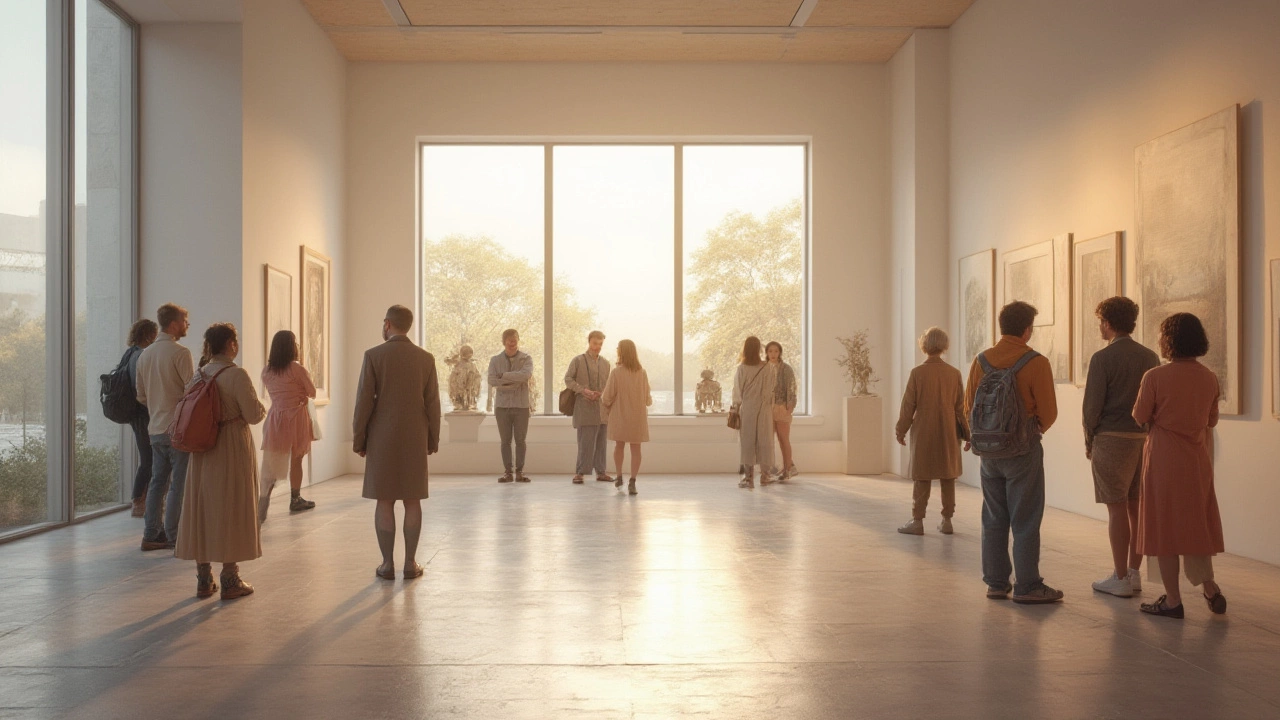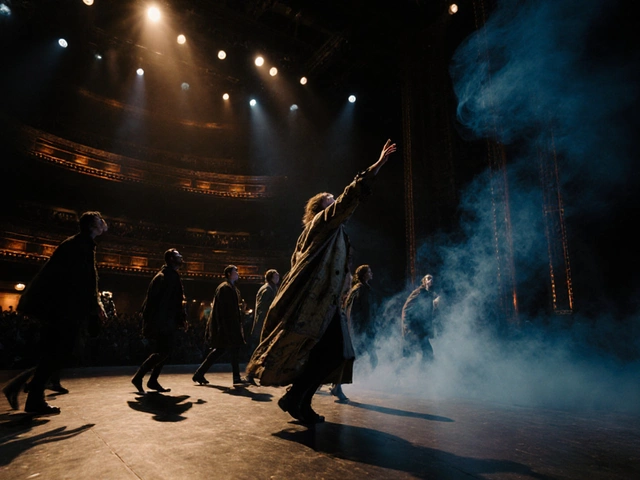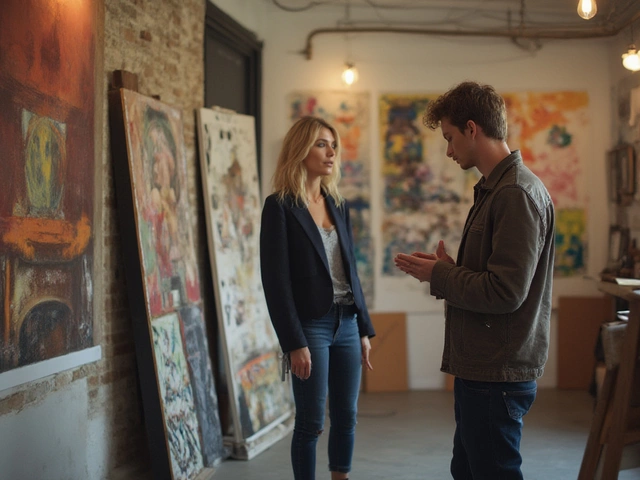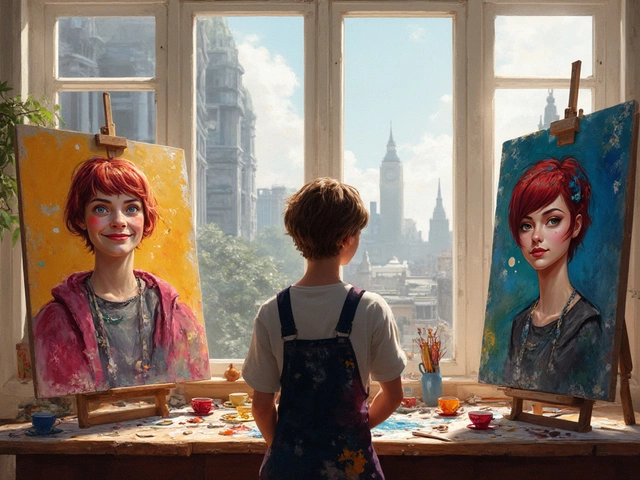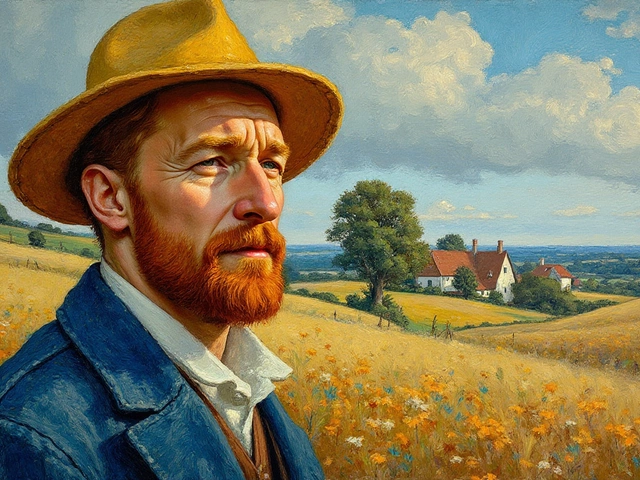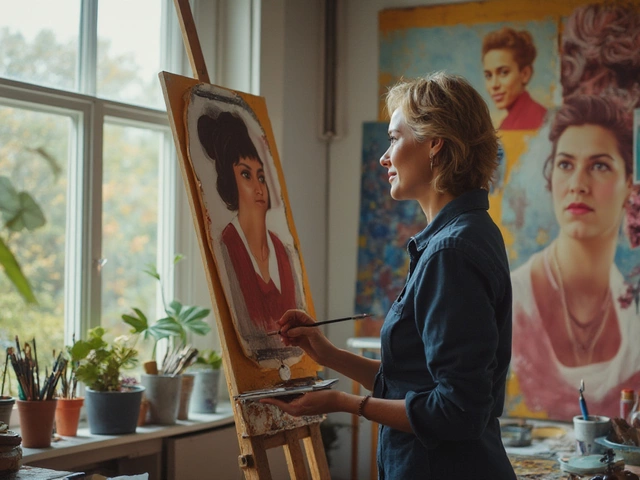Imagine you’re stuck in traffic, your phone’s buzzing with work emails, and Wellington’s rare sun has just vanished behind another cloud. Your mind’s spinning from one thing to the next, so you grab your headphones or walk into a gallery, desperate for something that actually works for your frazzled nerves. Not every song or artwork delivers that needed calm. Some genres pull the stress right out of you, while others just crank it up. But what’s truly the calmest genre? And can you bottle relaxation or fit serenity into a frame? Turns out, the calmest genres—whether in sound or on canvas—have a few things in common, but picking just one winner isn’t so simple.
What Makes a Genre "Calm"?
Calm isn’t just about slow tempos or muted colors. Our brains and bodies react to stimuli in ways that sometimes surprise us. Researchers from the University of Otago found that listening to certain music slows heart rate and even reduces blood pressure. Same goes for visual art: staring at a Monet can lower anxiety more effectively than scrolling your social media feed. But the ingredients that make a genre calm can be wildly different—maybe it’s the minimal soundscape of ambient music or the soft, dreamy brushwork in some impressionist paintings.
Let’s break down what usually signals calmness in art and music. In music, genres like ambient, classical, and even some jazz lean on soft dynamics, slow tempos, and repetitive patterns. They skip the thumping beats and sudden shifts you’ll find in pop or metal. In art, tranquil genres favor cool colors—like blues and soft greens—organic forms, and empty space. Abstract works, Japanese ink paintings, or the gentle haze of watercolors often get this soothing tag.
But calm is personal. For some, a Bach cello suite feels like a gentle breeze. For others, it’s all about the distant, washy synths of Brian Eno’s ambient albums or the mind-melting subtlety of Mark Rothko’s color fields. Even culture shapes what relaxes you: Gamelan music sends me into a trance, but put on hard techno and I’m wired.
Here’s a fun fact: in a 2019 survey by the International Music Therapy Association, more than 60% of therapists reported using classical or ambient music when helping clients unwind, with painting and drawing sessions often focused on watercolor or impressionistic styles for similar reasons. But what’s happening in your body tells the real story:
| Genre/Style | Avg. Heart Rate Reduction | Perceived Relaxation (1-10) |
|---|---|---|
| Ambient Music | 13 bpm | 9.1 |
| Classical | 11 bpm | 8.6 |
| Impressionist Art | Not measured | 8.4 |
| Watercolor Landscapes | 8.8 |
So, while calm can look or sound different, your body generally agrees: some genres turn the noise down better than others.
The Calmest Music Genres: From Ambient to Lo-fi
The hunt for chill in music doesn’t just take you to one genre. If you’re after pure peace, ambient music is pretty unbeatable. Brian Eno coined the term “ambient” back in the ’70s, aiming to create soundscapes that blended into the background or took the listener somewhere weightless. Pop on Eno’s “Music for Airports”—it’s the kind of music that doesn’t push, prod, or demand. It’s like taking a deep breath you didn’t even realize you needed.
Then there’s classical—especially the softer strains. A late Beethoven adagio or Erik Satie’s “Gymnopédies” invite your mind to settle. They’re structured but not rigid, full of gentle turns and calm flourishes. New Zealand’s own Michael Houstoun has even said he takes comfort in practicing Chopin nocturnes when the Wellington wind is howling at his studio window—there’s a reason classical keeps topping relaxation playlists.
Jazz, but not the wild, post-bop kind—think soft vocal jazz or cool jazz from Chet Baker, Bill Evans, or Ella Fitzgerald. It’s all about flowing lines and steady rhythms that don’t jolt. The vibe is smooth, never sleepy or saccharine; it invites you to take a seat and let go of what you’re carrying.
Lo-fi hip-hop is the newest contender in the calm game, especially among Gen Z and uni students. With its dusty vinyl crackles, mellow beats, and absence of intrusive lyrics, lo-fi has become the go-to music for study sessions. There’s even data to back it up: according to a 2022 Spotify Insights report, lo-fi playlists saw a 120% growth in streaming during exam periods, beating both pop and classical in popularity among those looking for stress relief.
Let’s not forget some traditional music styles. Hawaiian slack-key guitar, Indian raga in slow tempo, and the aforementioned Indonesian gamelan all use repetition and gentle layering to lull listeners into a uniquely peaceful space. They might not be trending on TikTok, but their centuries-long staying power says a lot about what soothes the human spirit.
If you want to try the calmest genres for yourself, here’s a quick guide:
- For bedtime or meditation: Try ambient or minimalist classical (Steve Reich, Max Richter)
- For background during work: Lo-fi hip-hop, soft jazz, or instrumental folk
- For anxiety or stress management: Classical piano, choral music, or sound baths
Remember, though: calm is personal. If you grew up with reggae or samba playing at home, the gentle sway of those genres might be what actually works for you. The trick is to listen to your own body and mind—when they get still, you’ve found your calm.
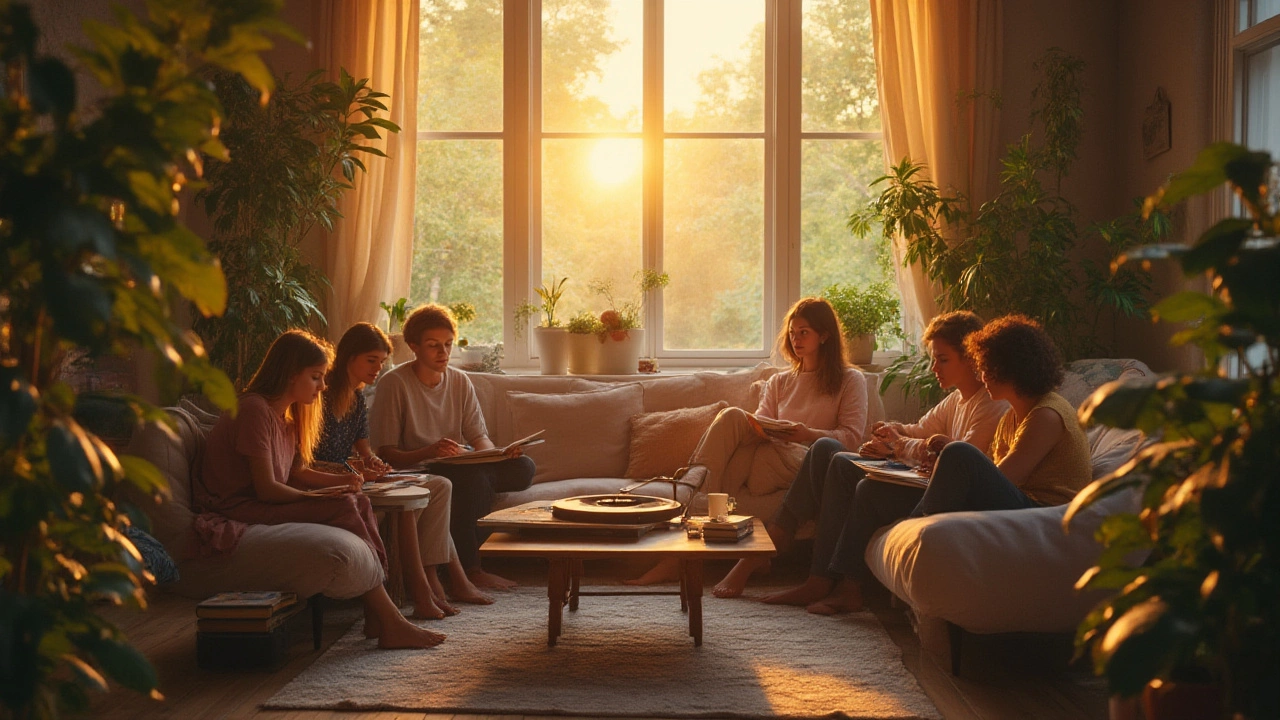
Visual Calm: Art Genres That Bring Down the Volume
You don’t need to be in a gallery to know when a painting’s done something to your headspace. Ever stared at a seascape by Frances Hodgkins or a Turner sunset and felt your breathing slow down? Visual art can alter our inner weather just as much as music. Some genres are king when it comes to calm.
Impressionism is a big one. Monet’s water lilies aren’t just pretty—they drag your gaze into a swirl of blues and greens that researchers at University College London found can produce brain patterns associated with meditation. It’s the softness, the lack of sharp edges, and the almost universal focus on nature and natural light.
Watercolor landscapes, from British or New Zealand artists, tend to evoke the clean air and open spaces we rarely get in the city. There’s something about the gentle bleeding of one color into another that’s relaxing even if you aren’t thinking about it. A tip: if you’re feeling anxious, try keeping small art prints of watercolor landscapes by your desk or bedside. Even brief glances at calming artwork throughout your day can help keep your nerves in check.
Minimalism, whether on canvas or as sculpture, carves away the noise. Artists like Agnes Martin or Ellsworth Kelly use repetition, symmetry, and empty space to clear the mind. You walk through a minimalist exhibition and feel the relief—a bit like stepping into a cool room after a sweaty summer stroll.
Japanese and Chinese ink wash painting, known as sumi-e or shuimohua, literally evolved to help viewers and artists find spiritual balance. The use of negative space is deliberate: what isn’t painted is just as important as what is. Many Japanese Zen temples use these paintings and minimalist rock gardens to create an environment primed for calm and reflection. No wonder these styles have made waves in wellness circles recently.
Some abstract art—particularly the color field works of Mark Rothko—can also feel deeply restful. When Rothko’s work, with its soft-edged rectangles, went on display at London’s Tate Modern, hospital patients who visited the gallery reported a 17% reduction in anxiety, according to a study by Dr. Rita Stringer in 2018. So, science says those giant blocks of color do more than just look stylish.
Here’s a neat trick: next time you’re at the Wellington Art Gallery or hanging art at home, go for paintings or prints that use cool blues and greens, soft edges, and natural themes. Steer clear of jagged lines and harsh reds if you want peace to linger.
- Impressionism for light and gentle scenes
- Watercolor landscapes for a nature-inspired reset
- Minimalism for clarity and breathing space
- Ink wash for balance and thoughtful quiet
- Abstract color fields for nonverbal tranquility
The proof is in the brain scans and the gallery visitor guestbooks: certain art genres make your world quieter, one glance at a time.
Why We Crave Calm: Culture, Science, and Everyday Practice
The hunt for the calmest genre says something about what we’re all secretly craving: a break. Twenty-four-seven alerts, the constant hum of public spaces, and work that doesn’t really switch off—modern life doesn’t exactly set the stage for calm to creep in naturally. But what’s interesting is that humans have been making art and music for one purpose since forever: to pull themselves out of fight-or-flight and reset.
Science keeps finding proof that exposure to calming art and music is more than a nice-to-have—it can shift cortisol levels, fight anxiety, and even patch up focus and memory. A 2022 study out of the University of Auckland measured schoolchildren’s heart rates before and after drawing or listening to soft music; stress levels dropped by 22% after just ten minutes. That’s not a subtle effect. It’s a change you can see on a monitor.
But culture shapes our tastes, so genres that feel calming in one place might be totally background noise somewhere else. In Aotearoa, the soothing sounds of taonga pūoro—traditional Māori instruments—are woven into meditation sessions and school music classes. The hollow, breathy sound of the pūtōrino or kōauau echoes the environment: wind, birds, water. For some Wellington locals, those are the true calm triggers, gathering power from the landscape and ancestry.
If you want to make calm genres part of your daily life, here are some solid tips:
- Create regular “micro-breaks”—two or three minutes of calming music or art should happen between meetings or after stressful news
- Use scented candles or diffusers with earthy or marine scents while listening or looking at art—it increases absorption
- At night, swap out phone scrolling for a brief audio art tour or an ambient music playlist
- Try creating your own art in these calm genres—even simple watercolor or pencil sketching drastically cuts stress
- Mix genres—paint while listening to ambient, or walk through an art exhibition with soft choral music in headphones
The best part? Building relaxation into your routine doesn’t take sweeping lifestyle changes. Start small and build from there—calm isn’t a single genre or experience, it’s the sum of your little choices throughout the day. And in a world that keeps getting noisier, giving yourself space to breathe, stare at art, or fall into a river of soft sound might be the sharpest—and kindest—move you can make.
So when you’re asking, “What is the calmest genre?”—maybe the better question is: which one works best for you, right now?
